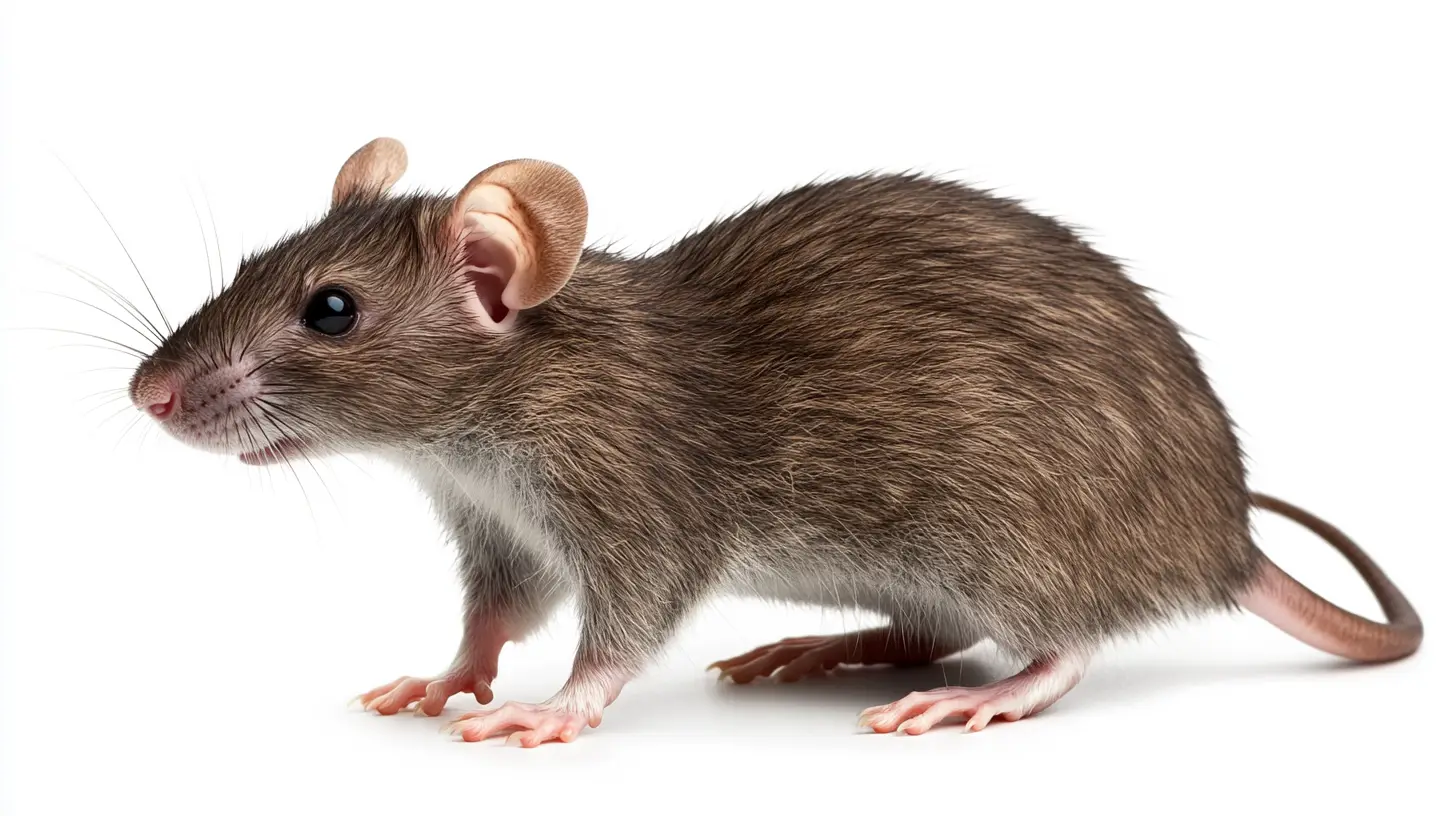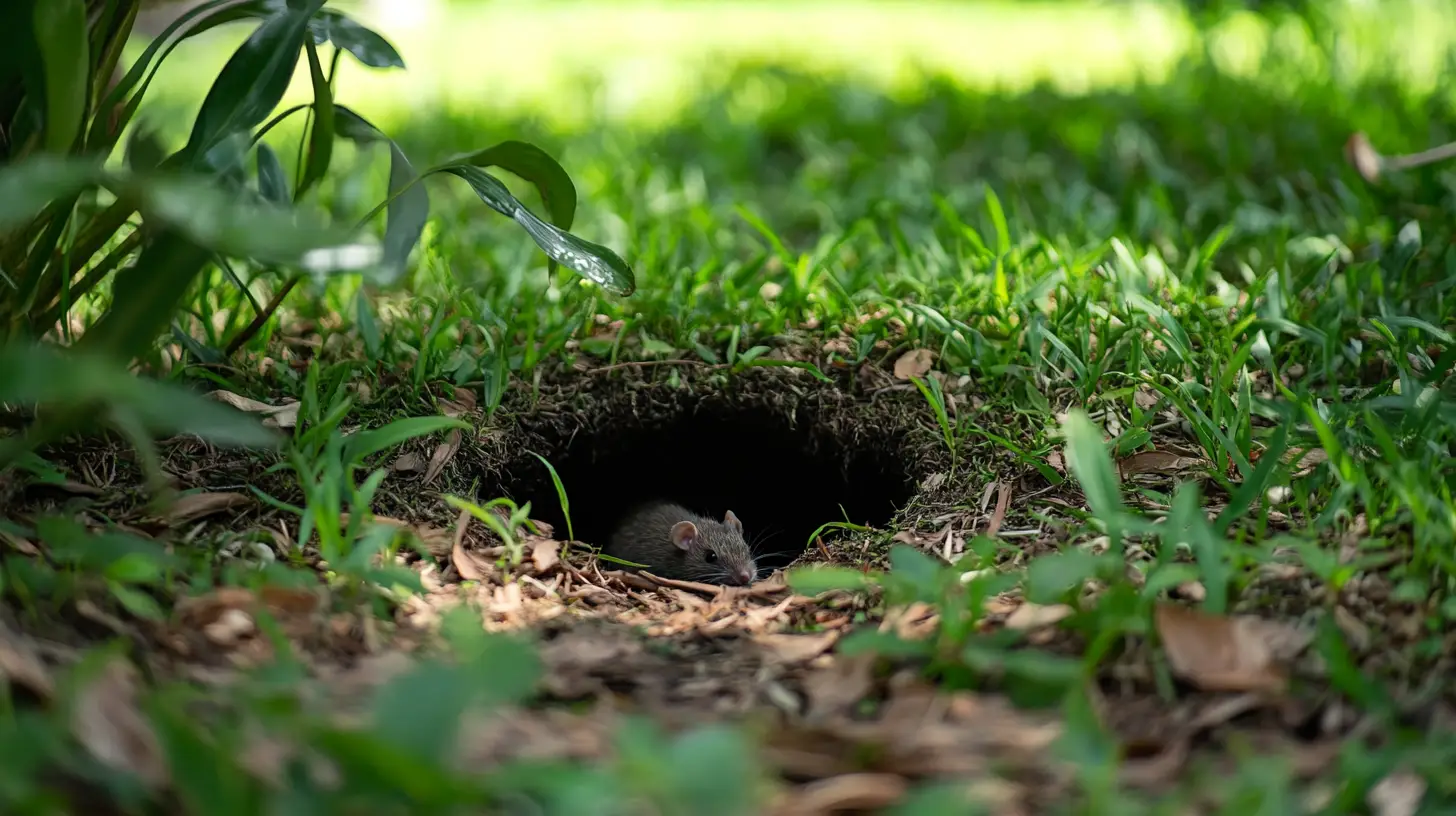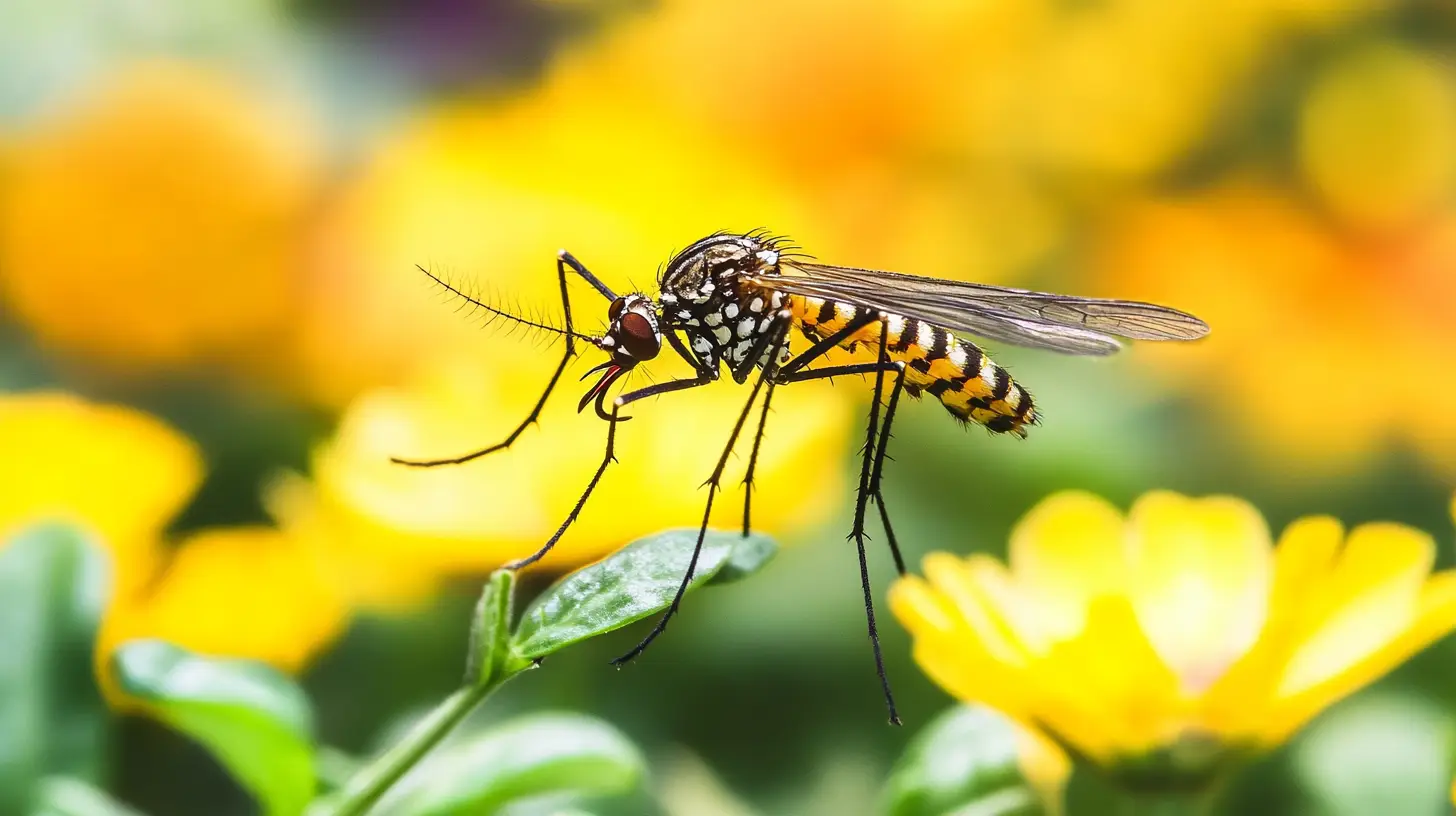
Table of Contents
If you’re dealing with roof rats in Lakewood Ranch, FL, you’re not alone. These agile pests are common in Florida, where the warm climate provides them with ideal living conditions. Known for their climbing abilities, roof rats often find their way into homes by scaling walls, trees, or utility lines, making their nests in attics, garages, and other high places. Once inside, they can quickly become a major problem, gnawing on wires, insulation, and wood, while also posing a health risk by carrying diseases like leptospirosis and salmonellosis.
To effectively get rid of roof rats, it’s important to understand their behavior and habits. Unlike Norway rats, which prefer to burrow underground, roof rats are natural climbers. They are typically active at night, making them difficult to detect until damage or droppings are found. These rats are particularly attracted to homes with easily accessible food sources like fruits, nuts, seeds, and pet food, making Lakewood Ranch homes with citrus trees or gardens a prime target.
Roof rats are prolific breeders, with a single female capable of producing up to six litters a year. Each litter can have up to eight young, which means a small infestation can quickly turn into a larger one if left unchecked. In addition to their rapid reproduction, roof rats are highly destructive. They are known to chew through electrical wiring, increasing the risk of fires, and can damage structural elements of your home as they nest.
In this blog post, we’ll explore effective strategies to get rid of roof rats in Lakewood Ranch. From prevention tips like sealing entry points and removing food sources to professional pest control methods, we’ll provide you with everything you need to keep these unwanted pests out of your home. By the end, you’ll have a clear plan to protect your home from roof rats and ensure a rat-free environment.
Key Takeaways
- Seal Entry Points: Roof rats can squeeze through small openings, so sealing holes and gaps larger than 1/4 inch around your home is critical. Focus on areas like vents, pipes, and rooflines, and trim back tree branches that provide easy access to your roof.
- Eliminate Food Sources: Roof rats are attracted to food. Storing food in airtight containers, promptly cleaning up spills, and keeping outdoor areas free from food sources like fallen fruit or birdseed can significantly reduce their attraction to your property.
- Use Traps and Baits: Snap traps and electronic traps are effective for immediate results. Bait with peanut butter or dried fruit and place traps where rat activity is high. Rodenticides can be used but should be applied with caution, particularly outdoors.
- Maintain Cleanliness: Both indoors and outdoors, cleanliness plays a vital role in controlling roof rats. Remove clutter, store garbage in sealed bins, and ensure there’s no standing water around the home to discourage roof rats from nesting.
- Consider Natural Repellents: Natural deterrents like peppermint oil, ammonia, and ultrasonic devices can help, but they work best when combined with other methods like exclusion and sanitation.
- Professional Help: For larger infestations or persistent problems, hiring a professional pest control service ensures a more comprehensive and safe approach to getting rid of roof rats.
By implementing a combination of exclusion, traps, repellents, and sanitation, homeowners in Lakewood Ranch, FL, can effectively manage roof rat infestations and keep their homes rodent-free.
What are Roof Rats?
Roof rats (*Rattus rattus*) are agile, nocturnal rodents known for their climbing abilities. They measure about 6 to 8 inches in body length with tails longer than their bodies. Common in urban areas, they often nest in attics, roofs, and trees, posing health risks due to contamination and potential disease transmission.
Identifying Roof Rats in Lakewood Ranch, FL
- Physical Characteristics: Roof rats, also known as Rattus rattus, are typically 7-8 inches long, with tails that add another 8-10 inches, making their total length up to 16 inches. They weigh between 5-9 ounces, but some can grow as large as 12 ounces. Their fur is smooth and soft, and their color ranges from brown with black interspersed to gray or white on their underside.
- Distinctive Features: Roof rats have scaly, dark tails that are longer than their head and body combined. Their ears are large and nearly hairless, and their eyes appear disproportionately large compared to their head. They also have a pointed snout and a slender body, which differentiates them from other rat species.
- Behavior: Roof rats are excellent climbers, favoring high places like attics, rooflines, and trees. They are nocturnal and most active at night, often entering buildings through small openings and nesting in upper areas.
- Signs of Infestation: Some telltale signs of a roof rat infestation include droppings that are pointed at both ends, gnaw marks on wood or electrical wires, and scratching sounds in the attic or walls. You might also find nests made of shredded material or grease marks along walls where they frequently travel.
- Habitat: Roof rats prefer to live in elevated spaces like attics or dense vegetation. They are common in warmer climates and coastal areas, such as Florida, where their climbing abilities allow them to easily access homes through small gaps.
These physical and behavioral traits make roof rats easily distinguishable from other rodents like Norway rats, which are bulkier and prefer lower ground.
Roof Rat Identification

Physical Characteristics
- Size: Head and body length of 7-8 inches, with a tail 8-10 inches long.
- Total length: Can measure up to 16 inches including the tail.
- Weight: Typically 5-9 ounces, but can grow up to 12 ounces.
- Color: Brown with black intermixed; gray, white, or black underside.
- Fur: Soft and smooth.
Distinctive Features
- Tail: Scaly, dark-colored, and longer than the combined length of head and body.
- Ears: Large and nearly naked.
- Eyes: Large relative to head size.
- Snout: Pointed nose.
- Body Shape: Long and thin.
Behavior
- Excellent climbers: Prefer elevated habitats.
- Nocturnal: Active primarily at night.
- Found: Often in upper parts of buildings like attics and rooflines.
Signs of Infestation
- Droppings: Pointed ends, about 1/2 inch long and 3/16 inch in diameter.
- Gnaw marks: Found on wood, electrical wires, and food packaging.
- Sounds: Scratching or scurrying noises in attics or walls, especially at night.
- Nests: Made of shredded materials in hidden areas.
- Grease marks: Along walls or rafters.
Habitat
Roof rats prefer high places like attics, trees, and dense vegetation. They often enter structures through small openings (larger than a nickel) and are common in coastal states and the southern third of the U.S.
Compared to Other Rats
- Longer tail: Compared to Norway rats.
- Larger ears: Compared to Norway rats.
- More slender body: Better climbers than Norway rats.
These characteristics can help distinguish roof rats from other rodent species and identify potential infestations.
How To Get Rid Of Roof Rats In Lakewood Ranch, FL
To effectively get rid of roof rats, it’s essential to adopt a multi-pronged approach that focuses on exclusion, sanitation, and population control. Start by blocking any entry points—seal holes or gaps larger than 1/4 inch with durable materials like steel wool, metal sheeting, or concrete, particularly around pipes, vents, and utilities. Don’t forget to trim tree branches that touch or overhang your roof, as roof rats are excellent climbers and will use these as a bridge into your home.
Removing food sources and potential nesting areas is another crucial step. Store food in airtight containers and clean up spills and crumbs immediately. Ensure both indoor and outdoor areas are free of clutter that roof rats could use for shelter, and keep vegetation around your property trimmed to limit their hiding spots. For trapping, snap traps or electronic traps baited with peanut butter, dried fruit, or nuts are highly effective. Set them in areas where you’ve noticed rat activity and check them frequently.
In cases where traps alone aren’t sufficient, rodenticides can be used—though these should be applied outdoors to prevent rats from dying inside walls. Always follow safety precautions when using poisons. Natural repellents such as peppermint oil, ammonia, or mothballs may also help, and ultrasonic devices could deter rats, although their effectiveness varies.
Effective Methods to Get Rid of Roof Rats
1. Block Entry Points
Seal any holes or gaps larger than 1/4 inch using durable materials like steel wool, metal sheeting, or concrete. Focus on areas around pipes, vents, and where utilities enter the home. Trim tree branches that overhang or touch the roof to prevent easy access for roof rats.
2. Remove Food Sources and Harborage
Store food in airtight containers, clean up spills and crumbs promptly, and remove any clutter that rats could use as nesting material. Keeping outdoor areas clear of debris and overgrown vegetation also helps reduce hiding places for roof rats.
3. Use Traps
Set snap traps or electronic traps in areas where you notice rat activity. Bait traps with peanut butter, dried fruit, or nuts for maximum effectiveness. Check and reset traps regularly to maintain control.
4. Consider Baits and Rodenticides
Rodenticides can be effective, but it’s important to use them outdoors to avoid rats dying inside walls or other hard-to-reach areas. Always follow safety precautions when handling and applying poisons.
5. Try Natural Repellents
Natural repellents like peppermint oil, ammonia, or mothballs can help deter roof rats from certain areas. Ultrasonic devices may also provide some deterrence by emitting sounds that are unpleasant to rats.
6. Improve Sanitation
Maintaining cleanliness is essential. Keep indoor and outdoor areas free from food waste, and store garbage in sealed containers. Make sure pet food is stored properly and removed at night to prevent attracting rats.
7. Hire a Professional
For larger or more persistent infestations, consider hiring a professional pest control service. Experts can provide targeted treatments and advice on long-term rat control solutions.
Combining multiple methods—such as exclusion, sanitation, and population reduction—will provide the most effective and long-lasting results. Persistence is key to ensuring that roof rats do not return.
Maintaining good sanitation is critical. Keep your home and yard clean, store garbage in sealed containers, and remove pet food at night. For severe infestations, it’s often best to consult a professional pest control expert who can provide targeted treatments.
Combining these methods—exclusion, cleaning, trapping, and professional help if needed—is the best way to ensure long-term roof rat control. Consistency and persistence are essential for success.
Frequently Asked Questions (FAQs)
How do I know if I have roof rats?
Roof rats leave several telltale signs of infestation. Look for droppings with pointed ends, gnaw marks on wood or wires, and hear scratching or scurrying sounds, especially in attics or walls. You might also find nests made of shredded materials or notice grease marks along rafters and walls where they frequently travel.
What’s the best way to block roof rats from entering my home?
Seal any holes or gaps larger than 1/4 inch, as roof rats can squeeze through small openings. Use durable materials like steel wool, metal sheeting, or concrete, and inspect areas around pipes, vents, and where utilities enter your home. Trim back tree branches that overhang your roof to eliminate access routes.
How can I eliminate food sources that attract roof rats?
To eliminate food sources, store all food in airtight containers, including pet food. Clean up spills and crumbs immediately, and ensure garbage bins are tightly sealed. Additionally, avoid leaving pet food out overnight and keep outdoor areas free of fallen fruits or birdseed, which can attract roof rats.
What traps work best for roof rats?
Snap traps and electronic traps are effective for capturing roof rats. Bait these traps with high-protein foods such as peanut butter, nuts, or dried fruit, and place them in areas where you’ve seen rat activity, like along walls, in attics, or near their entry points.
Can I use poison to get rid of roof rats?
Rodenticides can be effective but should be used with caution. It’s best to apply them outdoors, as poisoned rats could die inside walls or attics, leading to odor problems. Always follow label instructions and consider hiring a professional for safe application if you choose to use poisons.
Are there natural methods to repel roof rats?
Yes, natural repellents like peppermint oil, ammonia, and mothballs can help deter roof rats. These should be placed near entry points or areas where you’ve seen activity. However, natural repellents are often best used alongside other methods like exclusion and traps for more effective results.
How do I prevent roof rats from returning after getting rid of them?
To prevent roof rats from returning, maintain a clean environment by removing food sources and potential nesting areas. Seal all entry points, fix any water leaks, trim back trees, and regularly inspect your home for signs of rats. Regular cleaning, both indoors and outdoors, helps keep rats at bay.
What should I do if the infestation is severe?
If you have a severe roof rat infestation, it’s best to consult a professional pest control service. They can apply targeted treatments, such as baits and rodenticides, and offer long-term solutions to eliminate the problem while ensuring the safety of your home and family.
How do roof rats get into homes in the first place?
Roof rats often enter homes through small openings in the roofline, around vents, or through gaps in siding. They are excellent climbers and will use tree branches, utility lines, or other structures to access roofs and eventually find their way inside.
Are roof rats dangerous to humans?
Roof rats can pose health risks as they are known to carry diseases such as salmonella, leptospirosis, and rat-bite fever. They can also cause significant damage by gnawing on electrical wires, wood, and food packaging. If you suspect a roof rat infestation, it’s important to act quickly to prevent potential hazards.









